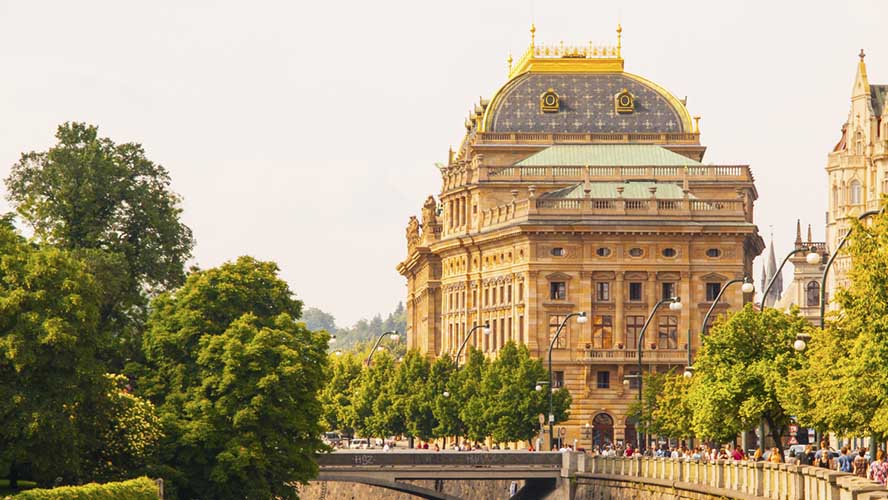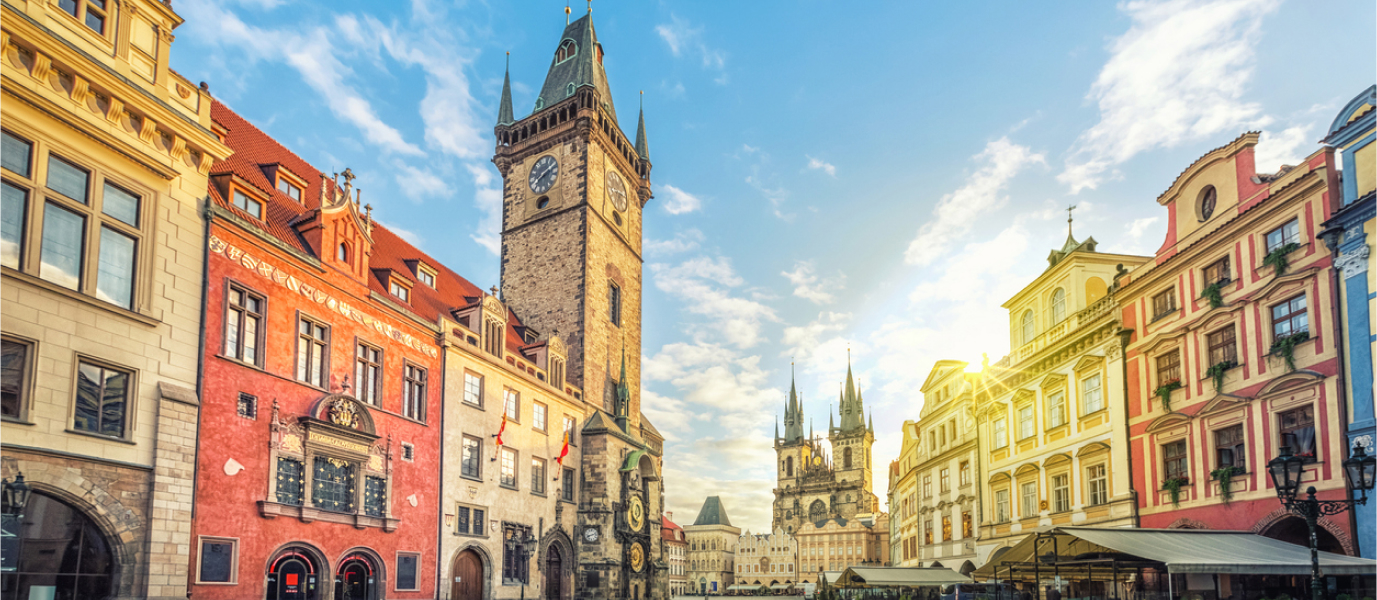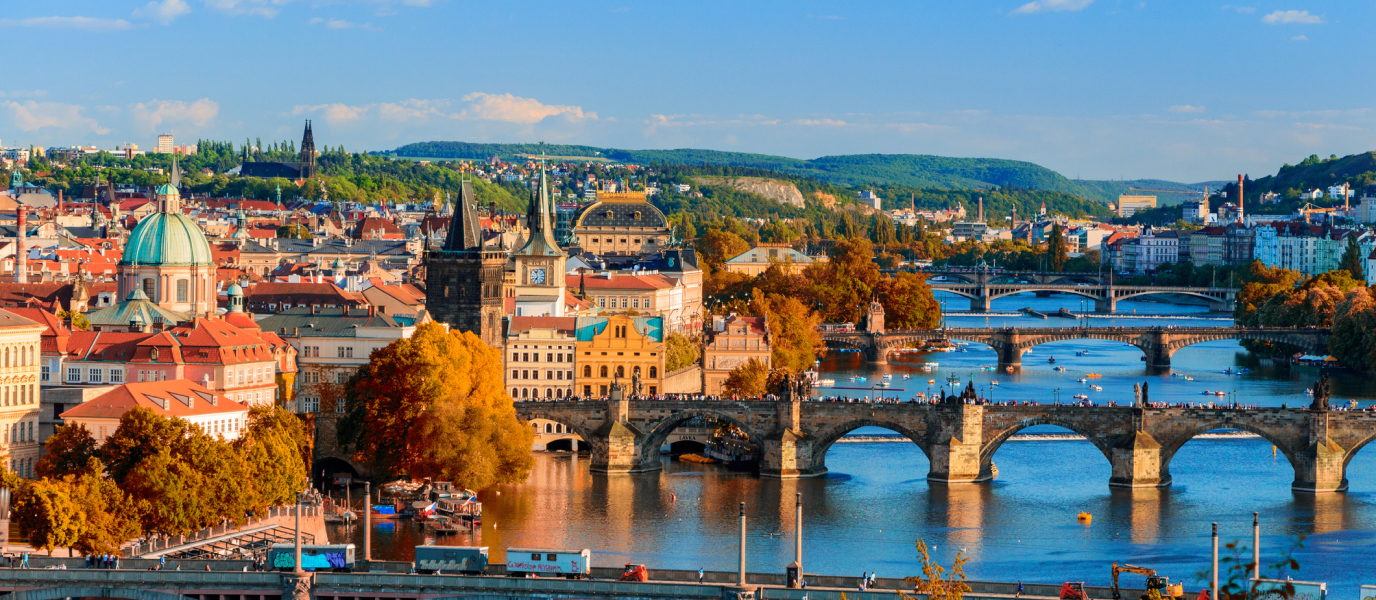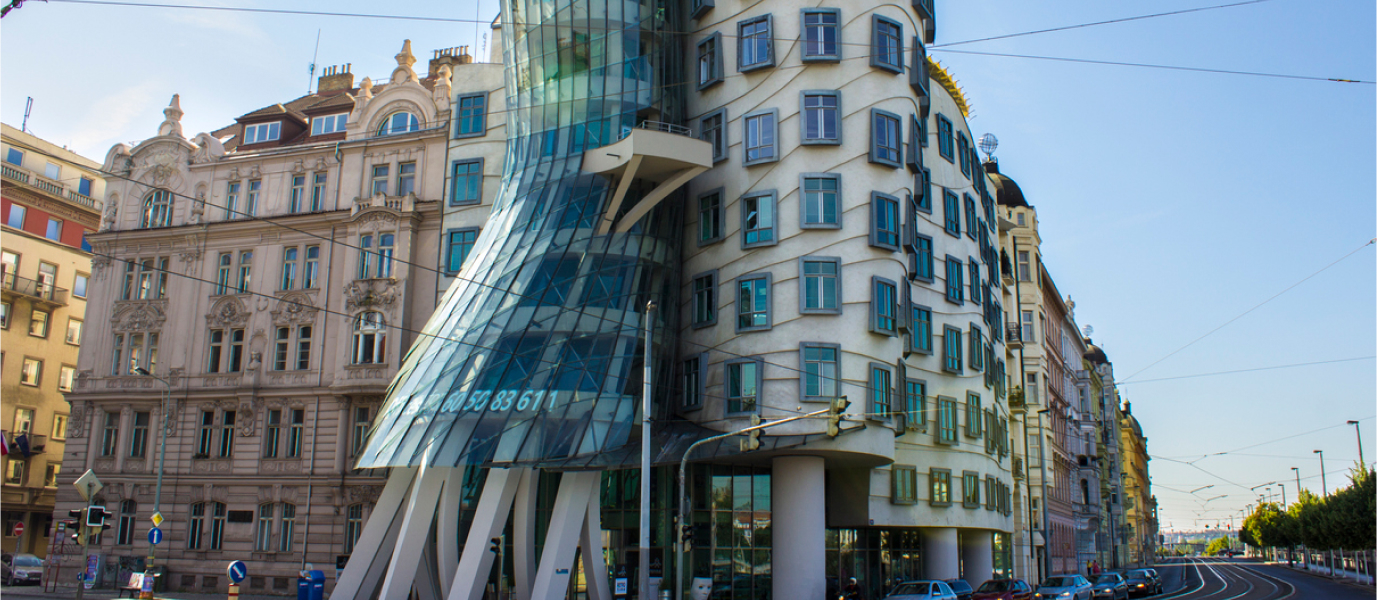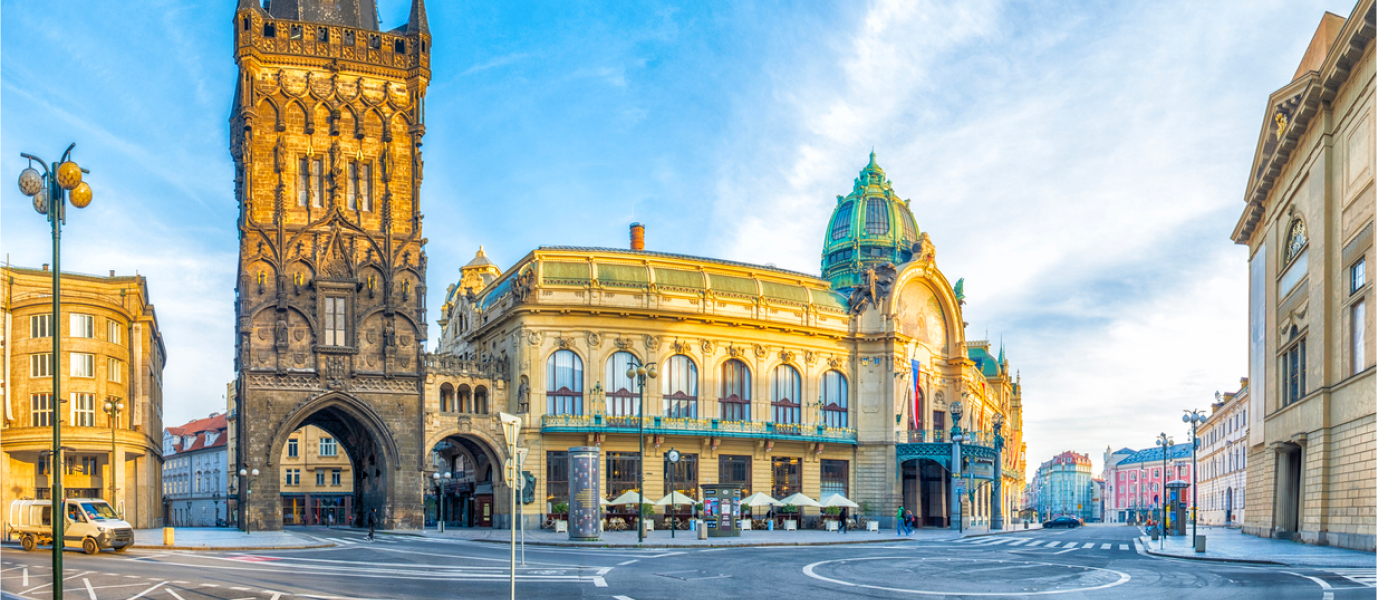Prague, the capital of the Czech Republic, is one of the most beautiful cities in Europe. Despite the fact it is a huge city divided into 10 districts, the most important is district 1, which is home to the city’s historic quarter, known as the Old Town or Staré Město. Declared a World Heritage Site by UNESCO in 1992, the Old Town seems as if it were straight out of a fairy-tale and is home to the oldest and most iconic buildings in the capital.
Prague is known as the Golden City, because the stone with which many of its buildings were built shimmers like gold when the sun shines, as well as the City of 100 Towers. If you decide to climb up one of its viewpoints or hills, you’ll soon find out why, as you contemplate a spectacular panorama dotted with towers and belfries, which loom above the rest of the buildings. At present, there are over 1,000 towers, but the description has nevertheless endured over time since it was used for the first time in the nineteenth century by the writer Josef Hormayer.
What to see in Prague’s Old Town: the clock tower and square
Strolling through Staré Město (the centre of Prague) is a true delight. The squares, streets, houses and churches of the Old Town make up the medieval district and most of the ‘100 towers’ are concentrated in the area. Created after the old Castle District expanded in the eleventh century to the eastern bank of the Vltava river, these days it still manages to hold on to its former character and sense of magic.
On the southern side of the Old Town Hall on Prague’s Old Town Square, which spans 9,000 square metres, is Prague’s famous clock tower. Housed in a Gothic tower with a height of 60 metres, the astronomical clock, dating from 1410, indicates the position and movement of the stars. Legend goes that its creator, Hanuš Růže, was blinded so that he couldn’t build another clock as beautiful as the one in Prague. The clock has three different parts: the circular calendar, with paintings by Josef Mánes, the astronomical dial, and the figures of the 12 apostles headed by St Peter. Every day, when the clock strikes the hour, from 9:00 AM to 11:00 PM, you can see the procession of the apostles and four allegorical figures.
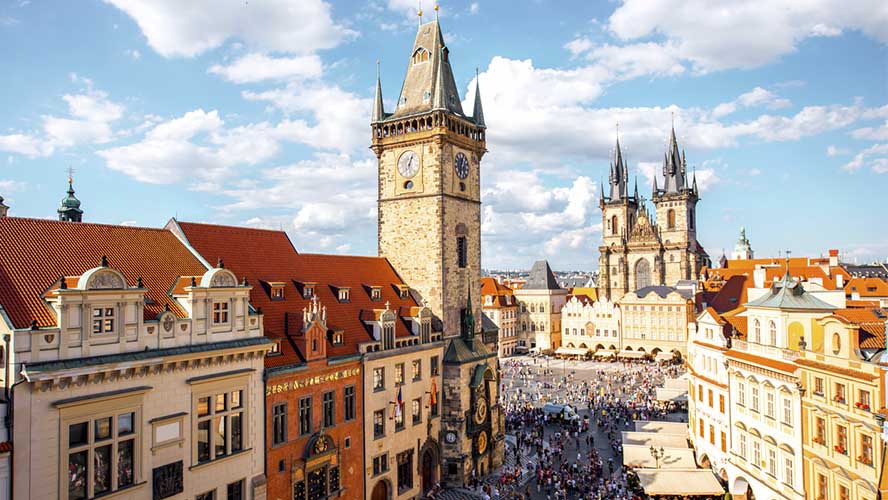
The towers of Týn Church: watching over the centre of Prague
Majestic and watchful, standing on the city’s Old Town Square, are also the twin towers of Týn Church. The place of worship, built in the fourteenth century, is situated opposite the Town Hall. Must-sees include its magnificent interior, its organ dating from 1673 and, of course, the two towers and their unique spires. You’ll discover one of the city’s most recognisable images, so don’t miss it.
Another one of the most beautiful towers with the most history in the historic quarter of Prague is the Powder Tower. Dating from the fifteenth century, it is one of the original gateways to the city, through which Czech kings passed as part of their coronation. It takes its name from the fact it was used as a military gunpowder store in former times. In addition to its architectural beauty and majesty, it boasts a beautiful viewpoint at a height of 44 metres.
Municipal House and the Clementinum
Very close to the Powder Tower is Municipal House, a beautiful Modernist-style building. Many different artists adorned its different rooms, including Alphonse Mucha, one of the maximum exponents of Art Nouveau to whom the city has dedicated a museum. Don’t miss its great concert hall, the French restaurant and the American bar. Exploring its interior is without a doubt well worth the effort.
The Clementinum is a group of buildings that once housed the largest Jesuit college in the world, built between the sixteenth and seventeenth centuries. A walk around the complex will allow you to get a better feel for the city’s ambience. Don’t miss its astonishing Baroque-style library—with its beautiful frescoes on the dome ceiling—which houses the famous eleventh-century Vyšehrad Codex.
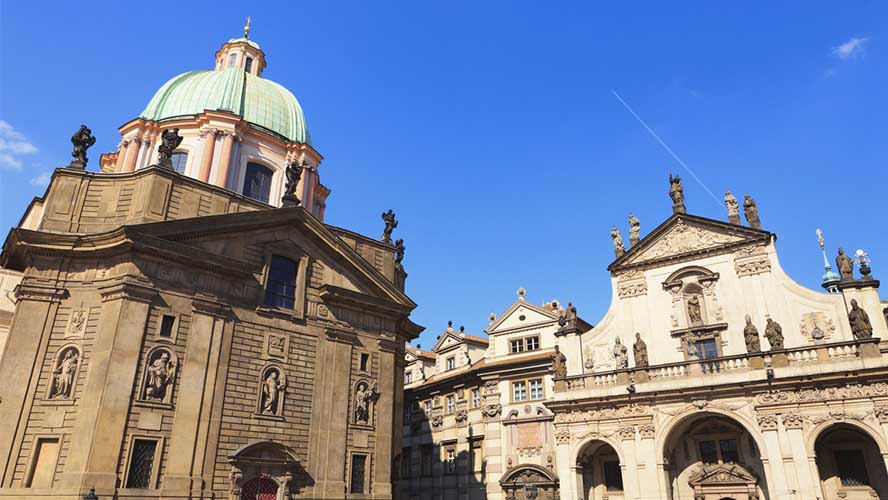
The Jewish Quarter, or Josefov, and Charles Bridge
The Jewish Quarter or Josefov, which lies within the boundaries of Prague’s Old Town, is a place with its own identity. It is home to up to six synagogues, among them the Spanish Synagogue, and the Jewish Cemetery of Prague, which has tombs dating from the fifteenth century.
A visit to Staré Město in Prague wouldn’t be complete without a stroll along Charles Bridge, built in 1402 by King Charles IV. There, you’ll be able to visit the Old Town Bridge Tower and admire the magnificent statues that adorn it.
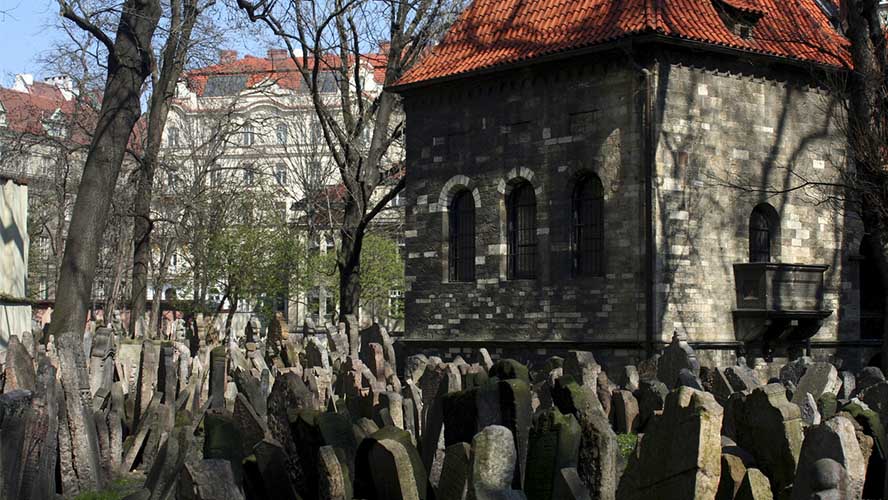
Mozart and the Estates Theatre of Prague
On the edge of the Old Town is the Estates Theatre, an enormous concert hall dating from 1783 built in Classicist style. It is well known, among other reasons, for being the place where Mozart conducted the 1783 premiere of his opera Don Giovanni. The theatre is part of the complex known as the National Theatre, along with the State Opera and Karlín Theatre.
